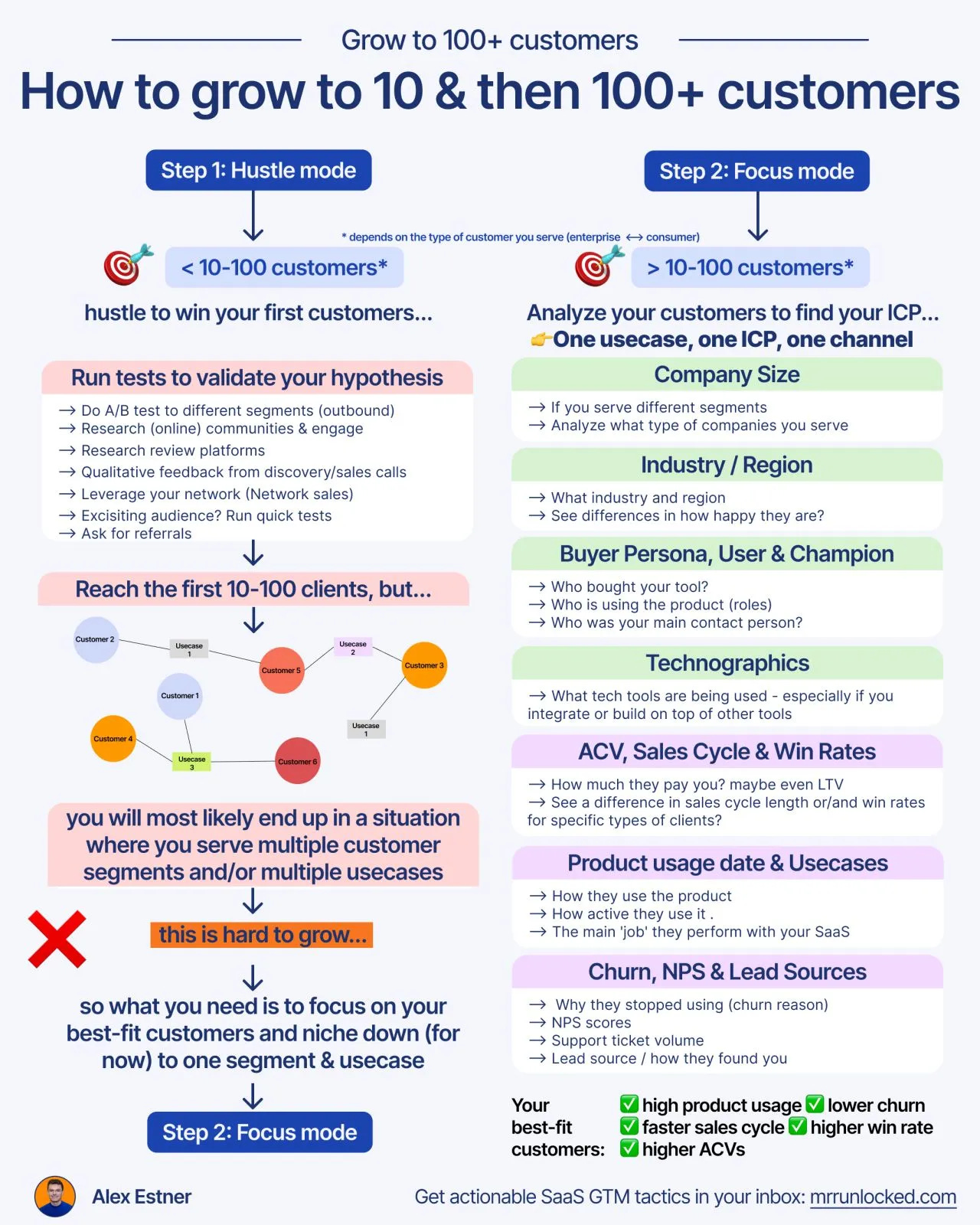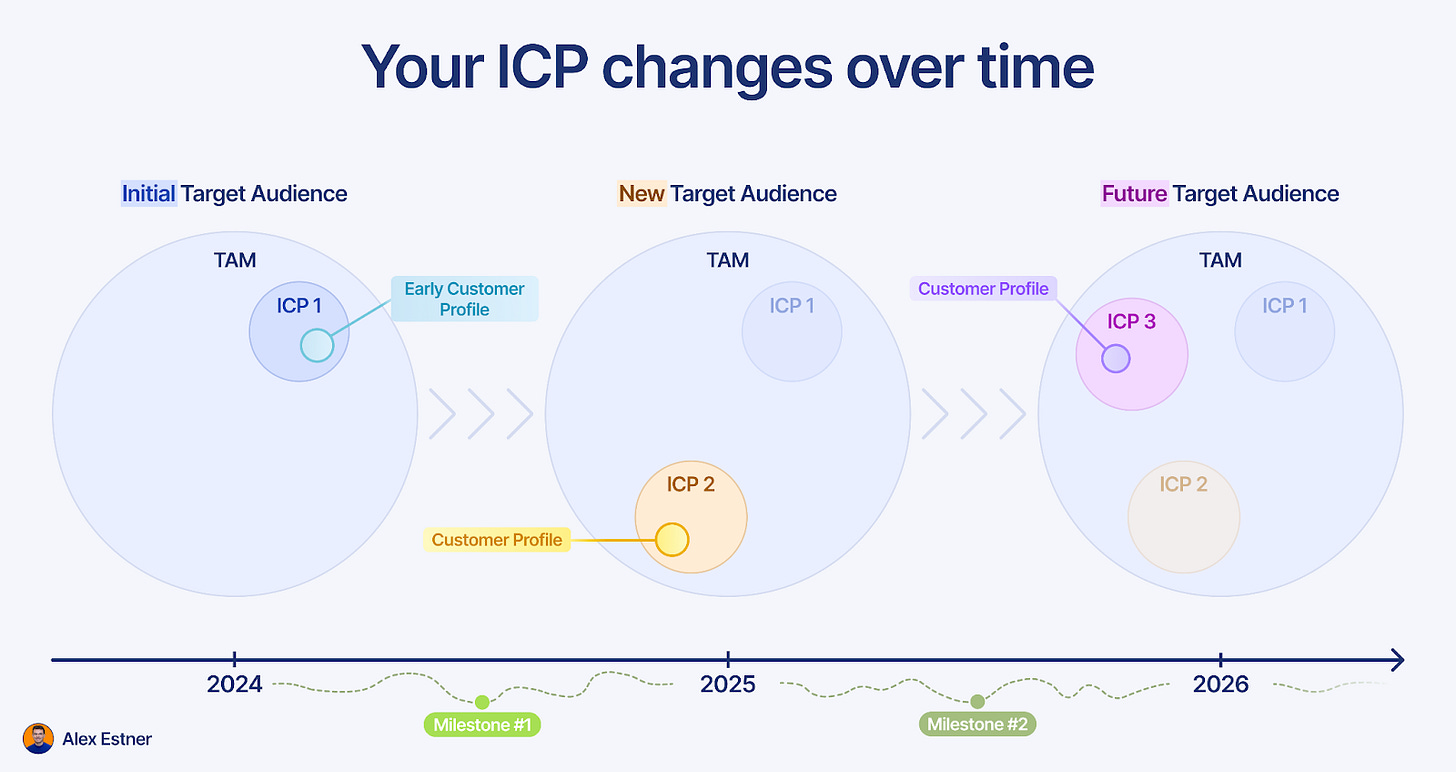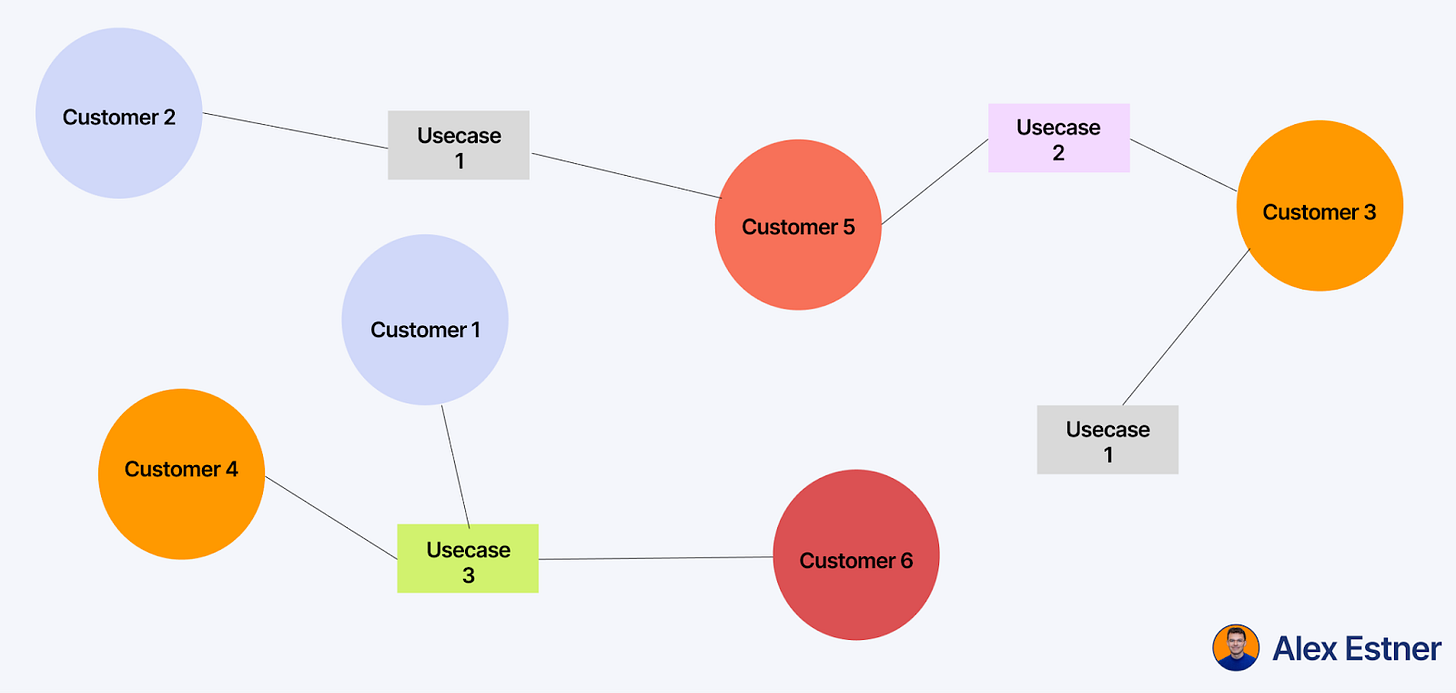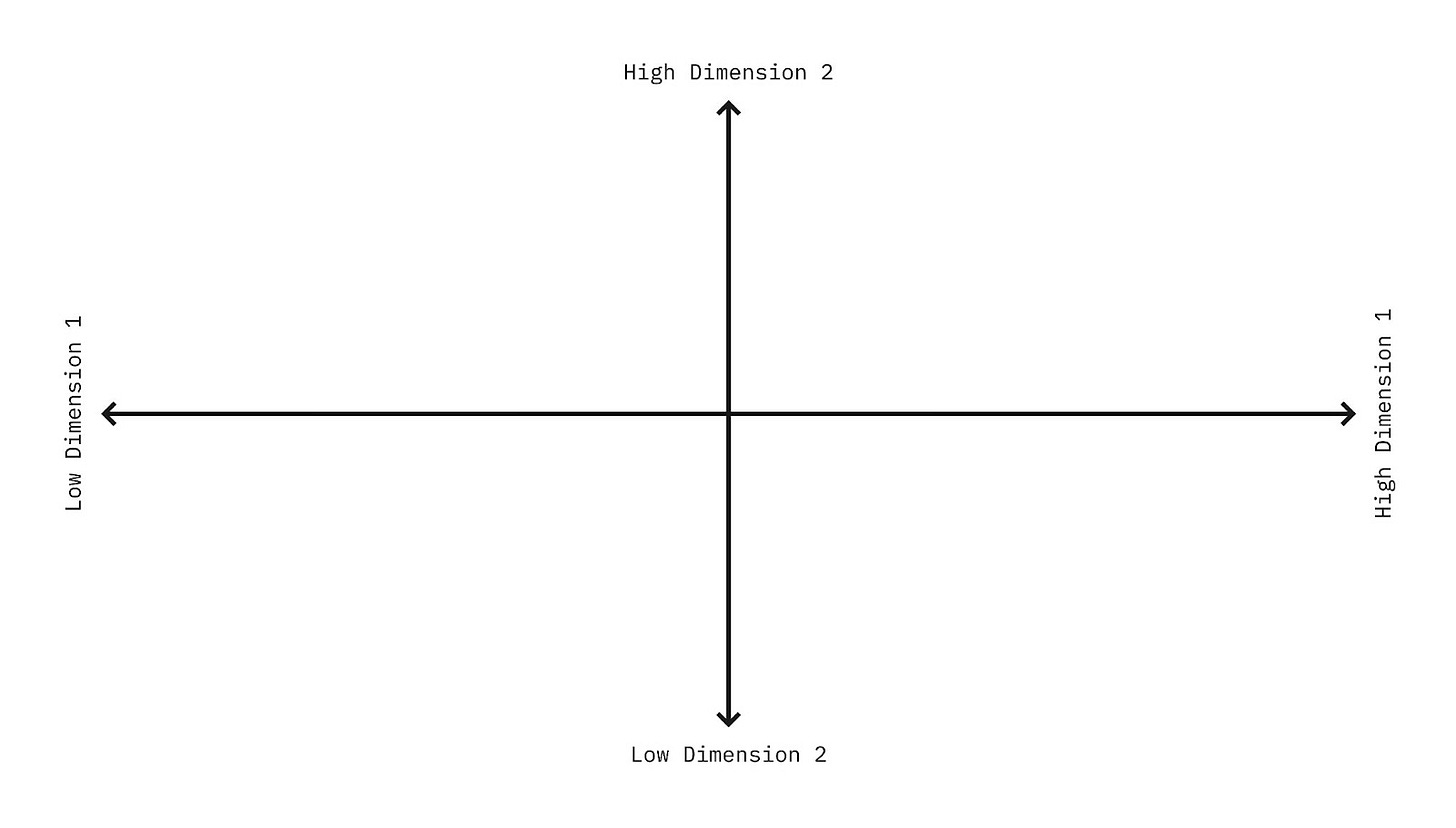GTM Foundation: How SaaS Founders grow from €0 to €1M ARR (Part 1)
GTM Strategy 101: ICPs, Positioning, Messaging & More Explained
Hey - it’s Alex!
Today we cover:
1️⃣ The 3 stages from €0 to €1 million ARR
2️⃣ The 10 GTM foundation elements to grow beyond €1 million ARR (Part 1)
3️⃣ Build and execute your GTM foundation in 6 months with my 1-on-1 GTM advisory
Bonus: List of my vetted Go-to software tools for early-stage SaaS startups
Side Note: I’ve launched my new website 🎉 - roast my website and share your honest feedback (just hit reply with your honest feedback)
In case you missed the last 3 episodes:
✅ The 10 most common GTM myths
✅ Hiring your first GTM team: 9 common mistakes
A quick shoutout to the 2025 sponsors of MRR Unlocked 📢
📢 Ahrefs— Looking for a Google Analytics 4 alternative?
📢 Emlen— The intuitive Buyer Experience Solution for modern B2B sales teams
📢 Attio— The AI-native CRM that’s built for the future
📢 Anima— Europe's fastest-growing healthtech company is hiring
📢 Turf— The #1 community platform for SaaS companies
📢 Trust— Powerful Video Testimonial Software for your SaaS business
📢 Topo — AI SDR Agents trained to run your outbound playbook
📢 Semrush—Boost Your Online Visibility with award-winning SEO Tool
📢 Oscr AI—Turn any content into engaging posts
Want to reach 4500+ early-stage SaaS founders/leaders? Sponsor the next newsletter.
The SaaS GTM Foundation to grow to €1 million ARR and beyond
Today's topic is very special to me. 🙌
This is part 1 of the 3-part GTM foundation series. Here you can read part 2 and part 3.
Building the GTM foundation with founders on their way to product-market fit is what I’ve been doing for 3+ years now.
But I’ve realized that all the content we’ve covered so far on MRRunlocked (90 episodes so far) has been about specific parts of GTM from €0 to €1 million ARR.
Some episodes have been deep dives into specific channels (e.g., Google Ads, Allbound, Founder-Led LinkedIn), while others touched parts of the GTM strategy (e.g., Messaging or Pricing).
But what has been missing so far is a piece that puts it all together, so you exactly know what it takes to grow from €0 to €1 million.
Your GTM foundation.
Without a strong foundation, your GTM org will come crumbling down.
I call it a powerful GTM foundation.
But before we deep-dive into how to build your GTM foundation, let’s have a quick refresh on the 10 most common GTM myths. 👇
Now that we have the myths out of our way, let’s look at the 3 stages that founders need to cross to go from €0 to €1 million ARR.
The 3 stages from 0 to 1€ million ARR
A lot of times, you read about the 0 to 1 stage. I rather believe the 0-1 stage consists of at least 3 (sub) stages.
But once you have achieved stage 3, you hit product-market fit. Congrats 🎉
Product Market Fit = Problem Solution Fit (Stage 1) + GTM Fit (Stage 2)
So when I talk about GTM Foundation, this combines GTM experimentation (Stage 1) & GTM Playbook V1 (Stage 2).
GTM Foundation = GTM Experimentation (Stage 1) + GTM Playbook V1 (Stage 2)
So let’s take a closer look.
Stage 1: Hustle mode
Your goal is to find the first 10 / 100 customers (depending on your ACV).
You will run different tests. You want to validate your hypothesis, so you do any and everything to land that first set of customers.
I call this GTM Experimentation.
❌ But you will most likely end up with different customer types and different use cases in this process. This is very hard to grow and scale.
✅ So you need to focus on your best-fit customers and, for the time being, niche down to one segment and use-case.
This is how you reach stage 2.
Stage 2: Focus mode
The goal is to go beyond 10 / 100 customers.
But you can’t do this while serving multiple segments and multiple channels because each of them requires different strategies and resources to work.
So, how do you do this?
Analyze your early customers (Early Customer Profile) to find your best-fit customers (Ideal Customer Profile) and focus on them till you scale to €1 million ARR.
Signs of best-fit customers are
✅ Higher product usage,
✅ Lower churn,
✅ Faster sales cycles,
✅ Higher win rates,
✅ Higher ACVs.
Focus on one channel, one use-case, and one ICP. If you are at this stage and want to learn more, check this out.
I call this GTM Playbook V1.
Once you have achieved that, congrats. You hit product market fit.
Stage 3: Expansion mode
Here, your goal is to go beyond 1 million ARR. You can do this in three ways -
1️⃣ Vertically - Same target audience (aka. ICP), but new use cases
2️⃣ Horizontally - Same use case, but new target audiences
or
3️⃣ Simply continue what you already do if there is a big enough market. Double-down/scale.
So now we know the 3 stages from 0€ to 1€ million ARR and beyond.
To get there, you need to build your GTM foundations.
The GTM foundation spread over: GTM Experimentation + GTM Playbook V1
10 elements of a strong GTM Foundation
Now, it’s time to get in the trenches and build your GTM foundations.
Building the GTM foundations for SaaS founders on their journey from 0 to €1 million ARR is exactly what I do in my 1-on-1 GTM advisory.
The following sections should act as your guide in navigating through the challenges of building your GTM foundation.
So we don’t go into details, rather link to relevant materials. But at the end, you know exactly what you need to create/master to have a strong GTM foundation.
The 10 elements of a strong GTM foundation:
Ideal Customer Profile
Positioning
Messaging
GTM Collaterals
Channels
Pricing
Sales Motion
CRM & Tracking
Forecasting & Planning
Internal Operating Systems
GTM Foundation: Checklist
1) Ideal Customer Profile (ICP)
Let’s start with what your ICP is.
Your ICP is NOT your Total Addressable Market (TAM).
Your TAM = The big market you sell to your investors
Your ICP = The part of the market that you target today with your product
Your ECP = A sub-segment of your ICP, that is easier to win early on.
It’s important to understand that your ICP will change over time.
The 'ideal' customers in the 0 to 100k € is different than your 'ideal' customers from 1€ million to 5€ million etc.
So live with the fact that your ICPs will change over time.
Think about it this way: Your ICP today brings you to your next milestone.
Once you hit the next milestone, you can revisit your ICP.
Early Customers
These are your first 10-100 customers. You usually find them via your network, referrals, and capturing high intent, as part of your “Hustle Mode”.
And they might be different from your ICP, in that they are:
Solution aware
In the market
Experimental
Whereas your ICP might be:
not yet solution aware
harder to reach
Require proof of work
Find your ICP (by analyzing your early customers)
Again, in your hustle phase, you will most likely end up with different customer types and multiple use cases. Not ideal to grow.
To do this, use a step-by-step process where you
1️⃣ Define your ‘better fit’ indicators
2️⃣ Collect data on your customers
3️⃣ Break down your base into segments
4️⃣ Analyze them against metrics that are indicators or ‘better fit’
ICP Framework
Once you have identified your ‘better-fit’ customers, write down their characteristics. Get specific.
A powerful ICP consists of two parts:
1️⃣ Ideal Company
Company size
Company stage and type
Other company-specific criteria
2️⃣ Ideal Persona (User + Buyer)
Who are these people
What are their JTBD, challenges, responsibilities, KPIs, metrics
What they consume, where they hang out, and what their day-to-day looks like
Trigger events and buying signals
But to keep things also ‘handable’, I recommend having:
the ICP framework above (with lots of information on your ICP), but also
a short ICP based on 4-5 criteria. These are the ones that you use in your day-to-day operations (e.g. building lists in LinkedIn Sales Navigator).
You can use my ICP framework in Miro to build your ICP version.
Your Anti ICP & Disqualification Criteria
It’s super powerful to be specific about who you do NOT want to serve.
This is sometimes easier done than your ICP.
Here’s my Anti ICP
Understand who you DO NOT WANT as your customers.
To find them, ask yourself questions like, what type of companies have
long sales cycles and low win rates
low contract value
high churn rates
high support volume
low engagement and satisfaction
You don’t enjoy working with
Map ICP in CRM
Once you know the criteria of your ICP, make sure to track the information on your CRM.
Only if you consistently collect the info can you analyze data and fine-tune your ICP over time.
2) Positioning
So let’s start with what positioning is.
So, in a nutshell, positioning means having clarity on:
1️⃣ Who benefits from your product = Ideal Customer Profile (ICP)
2️⃣ What your product does = Product Category and/or Primary Use Case
3️⃣ Why it’s better than the default option = Limitations of Status Quo + Your Key Benefits
4️⃣ How it’s different from other alternatives = Unique Differentiator / Positioning Angle
…and being able to clearly communicate this across your product, marketing, and sales touchpoints.
To answer these core questions, you need to ask yourself:
Who is your direct & indirect competition?
What is your primary competitor (aka. status Quo)?
What sets you apart from the status quo (aka. limitations and benefits)?
How are you different from your direct competitors (aka. unique differentiator)?
So to help you get tactical on this, let’s have a look at some frameworks.
Product vs. Use Case Positioning
One of the best ways to answer “What is your product? For what do I use the product?” is to know your:
Product Category and/or
Usecase
There is a great visual by Fletch for this.
So, you need to take a positioning decision:
Use Case Positioning vs. Product Category Positioning
In a nutshell, do this:
✅ Product Category positioning: if you’re building a product in an established market
→ Good indicator: you will find a category on G2, Capterra, etc., and there’s existing search demand on Google & co.
✅ Use case positioning: if you’re building a product in a rather new market (blue ocean); no established product category has been built yet.
→ Good indicator: No product category on G2, Capterra, etc.
This is step 1. Next, you need to add how you are different.
Unique differentiator: Positioning against (direct/indirect) competition
Unique differentiator = Something that you have that your competition does not.
This can be a specific feature or the fact that you serve a specific market better (e.g. being GDPR compliant, if you sell to the DACH market).
To find your differentiator, have a look at 6 established positioning angles.
Positioning angles
There are 6 different angles you can use to position your product
Niche down
Low-cost player
Premium player
Unique benefit
Being the ‘lite’ player of something complex
Mix of the above
We also covered positioning in the Founder-Led LinkedIn Guide.
Competitor Positioning Map
It helps to create a visualisation where you are compared to your direct & indirect competition.
3) Messaging
Messaging is what you say/communicate in all your customer-facing communication. It is how you ‘turn your positioning’ into something tangible.
Messaging Framework
Your messaging is built on 5 parts, including
Market
ICP
Competitive alternatives
Product
Value proposition
We won’t go into details today. But if you need to work on your messaging, check out this Miro Template (used by 4000+ startups)
1-sentence value proposition/tagline/ Elevator Pitch
Based on the above messaging framework, create a short version.
Something that you use in the elevator :) And if you don’t use it in the elevator, it’s powerful for your LinkedIn profile, Homepage hero section, Email campaigns, Google Ads, LinkedIn posts, and so much more.
Create your version of the 1-sentence value proposition and then use it as often as possible and iterate on it.
Every conversation with potential clients is a chance to train. This is how you’ll be able to best convey what your SaaS does and pitch it naturally.
FAQs, Objections & How to handle them
Every SaaS founder will come across objections in the early days.
It’s best to know how to handle them. Use my concern-handling template to make this process more efficient.
Another powerful tactic is to create a “Customer Language Swipe File” - a place where you collect words/phrases from sales calls & interviews with your customers. A goldmine for copywriting.
Once we have covered Steps 1 to 3, we can turn these insights into our GTM collaterals.
That’s it for Part 1 - we already covered 3 of the 10 elements of a powerful GTM foundation.
Ideal Customer Profile ✅
Positioning ✅
Messaging ✅
GTM Collaterals (covered in Part 2)
Channels (covered in Part 2)
Pricing (covered in Part 2)
Sales Motion (covered in Part 2)
CRM & Tracking (covered in Part 2)
Forecasting & Planning (covered in Part 2)
Internal Operating Systems (covered in Part 2)
So stay tuned for GTM Foundation Part 2 (published in 2 weeks).
Need help with building your GTM foundation?
I cover these exact modules when I work with founders in my 1-on-1 GTM advisory. So if you are a B2B SaaS founder and are struggling with any of these areas, let’s hop on a call and see if my 6-month 1-on-1 GTM advisory is the right fit for you.
Not sure? Read the case studies of working with 20+ SaaS founders in the last 3 years.
Happy growth 🚀
3 ways I can help you grow your SaaS to €1 million ARR 👇
1️⃣ Build your SaaS GTM strategy with my free Workbook (helped 5000+ SaaS leaders)
2️⃣ Get access to 100+ actionable SaaS growth tactics (helped 250+ SaaS leaders)
3️⃣ Work 1-on-1 with me - GTM Advisory for SaaS founders from 0€ to €1 million ARR























++ Good Post, Also, start here stock market, AI research, Crash Courses, 100+ Most Asked ML System Design Case Studies and LLM System Design
Stock Market
https://open.substack.com/pub/stockmarketanalysis04/p/important-stock-market-post-04-which?r=14q3sp&utm_campaign=post&utm_medium=web&showWelcomeOnShare=false
https://open.substack.com/pub/stockmarketanalysis04/p/important-stock-market-analysis-which?r=14q3sp&utm_campaign=post&utm_medium=web&showWelcomeOnShare=false
https://open.substack.com/pub/stockmarketanalysis04/p/important-stock-market-post-02-understand?r=14q3sp&utm_campaign=post&utm_medium=web&showWelcomeOnShare=false
https://open.substack.com/pub/stockmarketanalysis04/p/important-stock-market-post-03-this?r=14q3sp&utm_campaign=post&utm_medium=web&showWelcomeOnShare=false
Crash Courses
https://open.substack.com/pub/crashcourses/p/crash-course-02-a-complete-crash?r=14q3sp&utm_campaign=post&utm_medium=web&showWelcomeOnShare=false
https://open.substack.com/pub/crashcourses/p/crash-course-01-a-complete-crash?r=14q3sp&utm_campaign=post&utm_medium=web&showWelcomeOnShare=false
AI/ML Research
https://open.substack.com/pub/airesearch04/p/ai-research-2-kimi-k2-thinking-a?r=14q3sp&utm_campaign=post&utm_medium=web&showWelcomeOnShare=false
https://open.substack.com/pub/airesearch04/p/ai-research-1-the-transformer-revolution?r=14q3sp&utm_campaign=post&utm_medium=web&showWelcomeOnShare=false
LLM System Design
https://open.substack.com/pub/naina0405/p/most-important-llm-system-design-b31?r=14q3sp&utm_campaign=post&utm_medium=web&showWelcomeOnShare=false
https://naina0405.substack.com/p/launching-llm-system-design-large?r=14q3sp
https://naina0405.substack.com/p/launching-llm-system-design-2-large?r=14q3sp
[https://open.substack.com/pub/naina0405/p/llm-system-design-3-large-language?r=14q3sp&utm_campaign=post&utm_medium=web&showWelcomeOnShare=false
https://open.substack.com/pub/naina0405/p/important-llm-system-design-4-heart?r=14q3sp&utm_campaign=post&utm_medium=web&showWelcomeOnShare=false
System Design
https://open.substack.com/pub/naina0405/p/system-design-tech-case-study-pulse-862?r=14q3sp&utm_campaign=post&utm_medium=web&showWelcomeOnShare=false
https://open.substack.com/pub/naina0405/p/system-design-tech-case-study-pulse-b3c?r=14q3sp&utm_campaign=post&utm_medium=web
https://open.substack.com/pub/naina0405/p/system-design-tech-case-study-pulse-135?r=14q3sp&utm_campaign=post&utm_medium=web
https://open.substack.com/pub/naina0405/p/system-design-tech-case-study-pulse-007?r=14q3sp&utm_campaign=post&utm_medium=web
How to Build Tech
https://open.substack.com/pub/howtobuildtech/p/how-to-build-tech-01-the-heart-of?r=14q3sp&utm_campaign=post&utm_medium=web&showWelcomeOnShare=false
Its feels like permutation of your past blogs